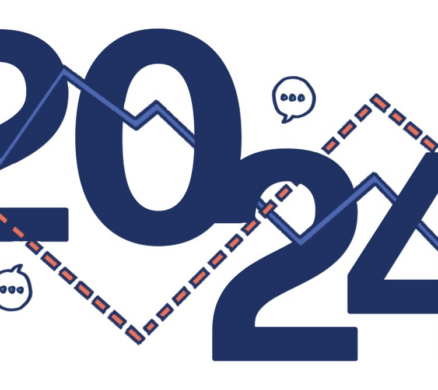
This is the fifth installment of our ‘Building Your Digital Landscape’ series about the best practices you can use to construct a strong digital presence. If you’re catching up, you can check out our Digital Marketing Acronym Reference Guide, Head into Header Tags for SEO, Find Five Truths for Your Social Space or Get Back to Basics at Social Media Bootcamp.
Increase Viewership by Formatting Video Content Vertically
In the not so distant past, videographers would have laughed at the idea of intentionally creating a vertical (or 9:16) video. They would shake their heads at the “amateurs” who never could remember to turn their phones horizontal. Who remembers the video by Gloves and Boots, a sarcastic video blog, “vertical video syndrome?”
Well, who’s laughing now?
Vertical video, in our phone-dominated world, rules social media. TikTok, Instagram stories, Facebook, Snapchat—all of these platforms give more attention and real estate to vertical formats that fit the device in everyone’s hand. The traditional 16:9 landscape video doesn’t hold attention in this “swipe, tap” world.
Vertical Video: A Brief History
So, how did we get here?
In 2013, a short-lived app called Vine had great success with short-form video that began opening the eyes of the vertical-resistant.
In 2015, Snapchat touted that vertical videos were earning nine times the completion rates of horizontal videos. More and more apps began adapting to the phone’s placement in people’s hands and the natural motions they would take in using their phones.
Even YouTube finally began playing nicely with vertical videos in 2018.
Going with the (Vertical) Flow
Fast forward to 2021. If you are utilizing social media either for organic growth or digital marketing, fully embracing vertical video is imperative. Social media is entirely a competition for attention—your brands are competing with friends and family; organizations are competing with entertainers; and so on.
We don’t need metric reports to tell us (though they do) that the general mobile consumer doesn’t want to turn their phones to view horizontal content – 94% of the time they’re holding their phones vertically. Content creators need to meet their audiences where they are; and currently, that’s on their phones—vertically.
Tools for the Trade
If you want an easy way to get started with vertical video, there are online apps and software that easily resize videos for the various platforms and the preferred size. However, it’s best to not lean too heavily on converting videos that were created specifically for traditional viewing. Much can be lost in the cropping of videos.
It’s worth it to storyboard out and intentionally create content in these new formats. Not to mention, the audience that you’re vying for attention is well versed in intentional vs. “eh, that’ll do” kind of content. They’re consuming video online upwards of 6 hours per week. Not only that, but it’s no longer just professionals creating video content. More video content is uploaded every 30 days than what the major U.S. television networks have broadcast in 30 years (source: Wordstream).
If creating video content is exciting yet daunting, fear not. Not only is there a multitude of tools and templates now available to help create videos for social consumption, there are plenty of tutorial videos (ironically, many of these are horizontal and on YouTube) to help teach nearly any creation skill desired.
And if the idea of teaching yourself how to create vertical videos for your brand brings more anxiety than excitement, reach out! We would love to help you; and our in-house videography team, although once very reluctant, is now on board with the vertical video trend that we all know and, admittedly, love.





